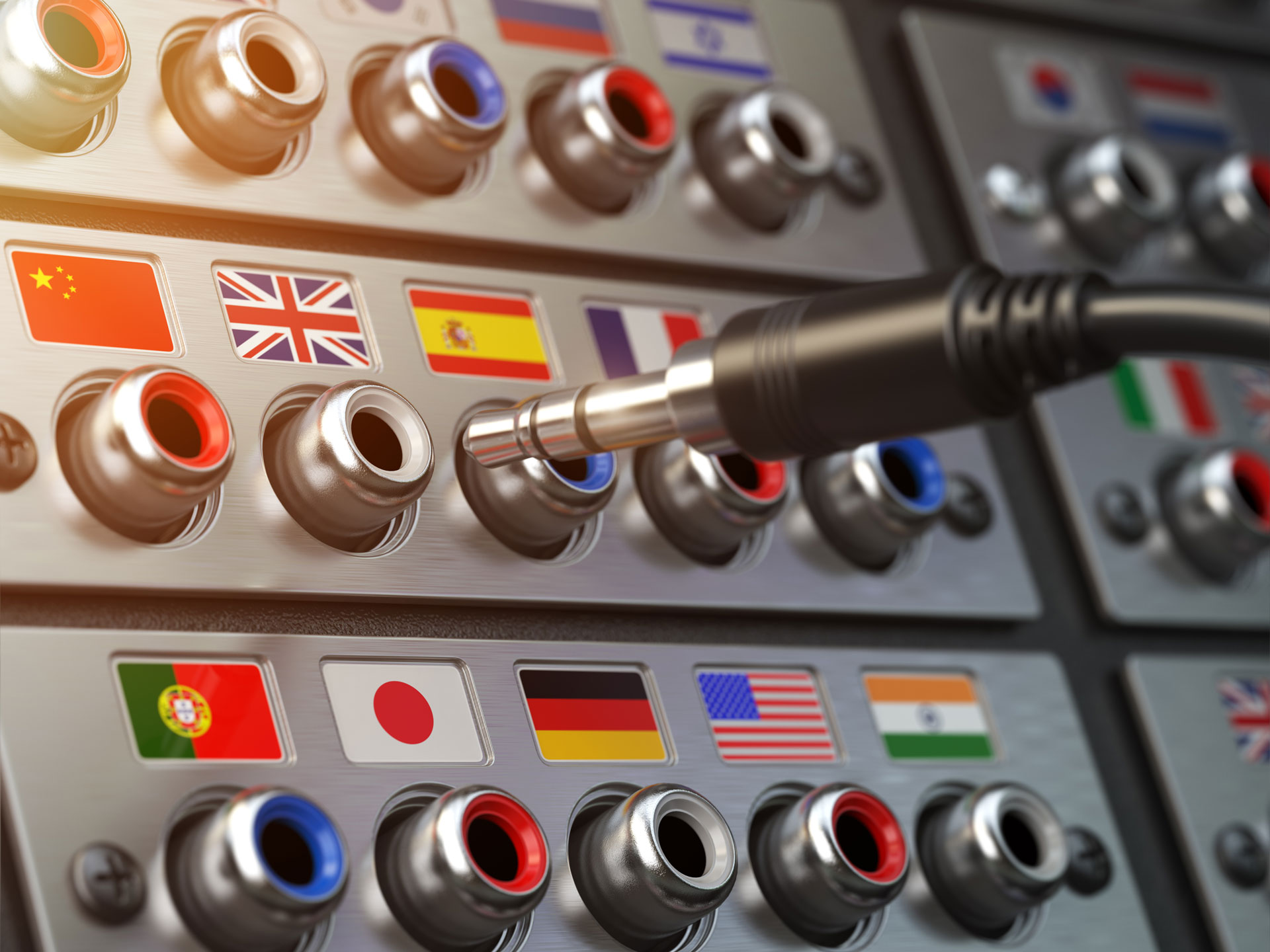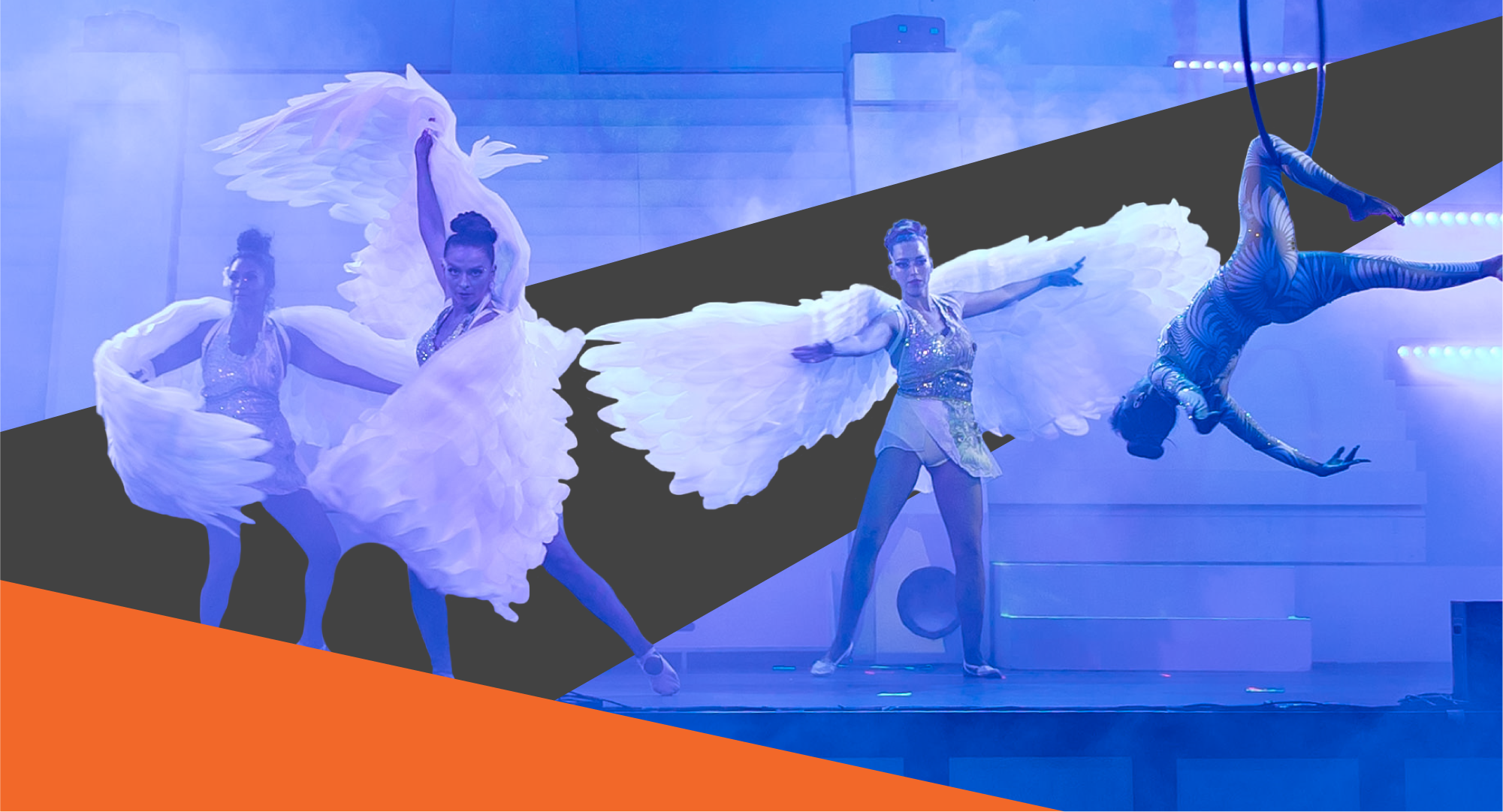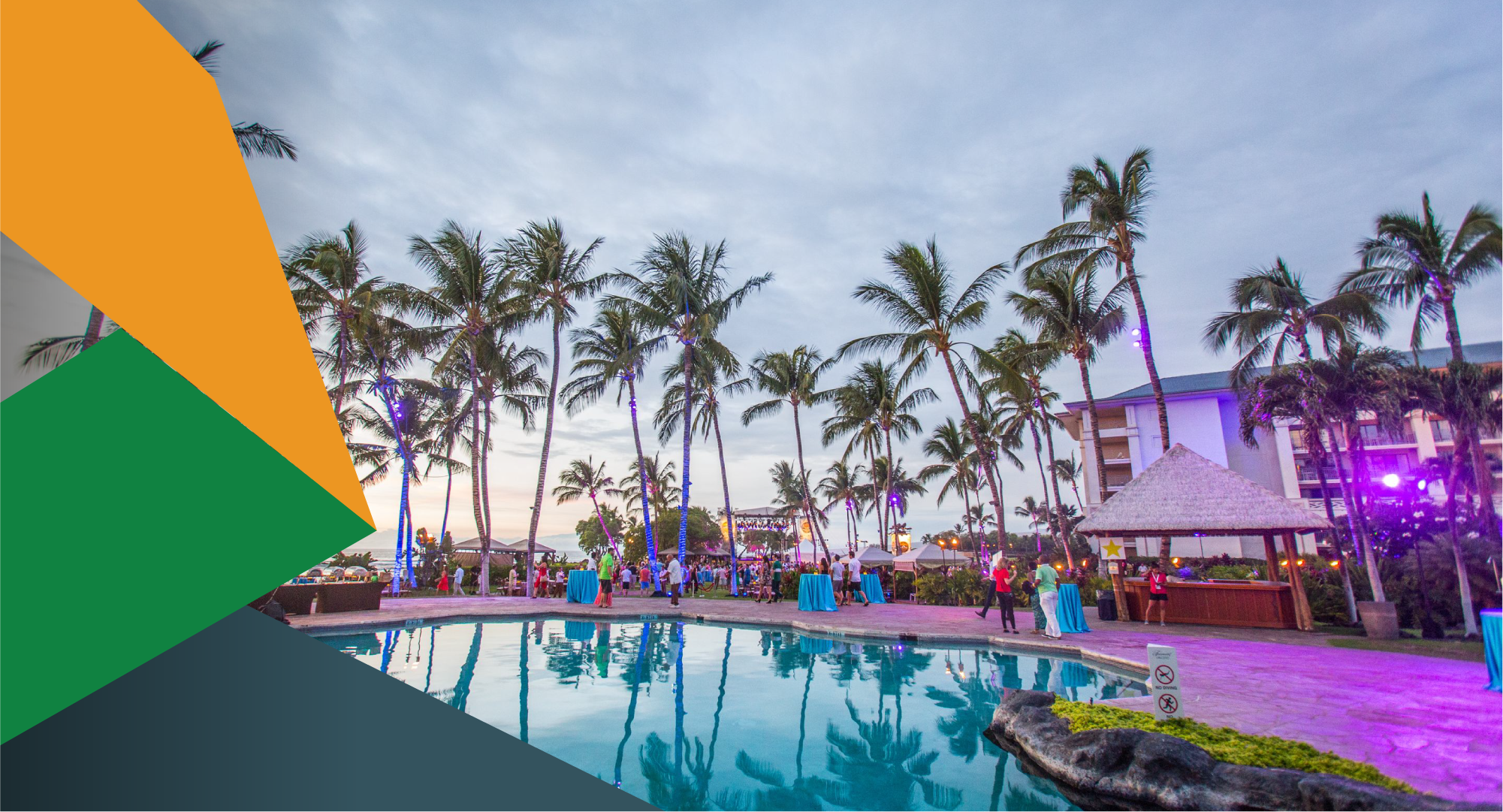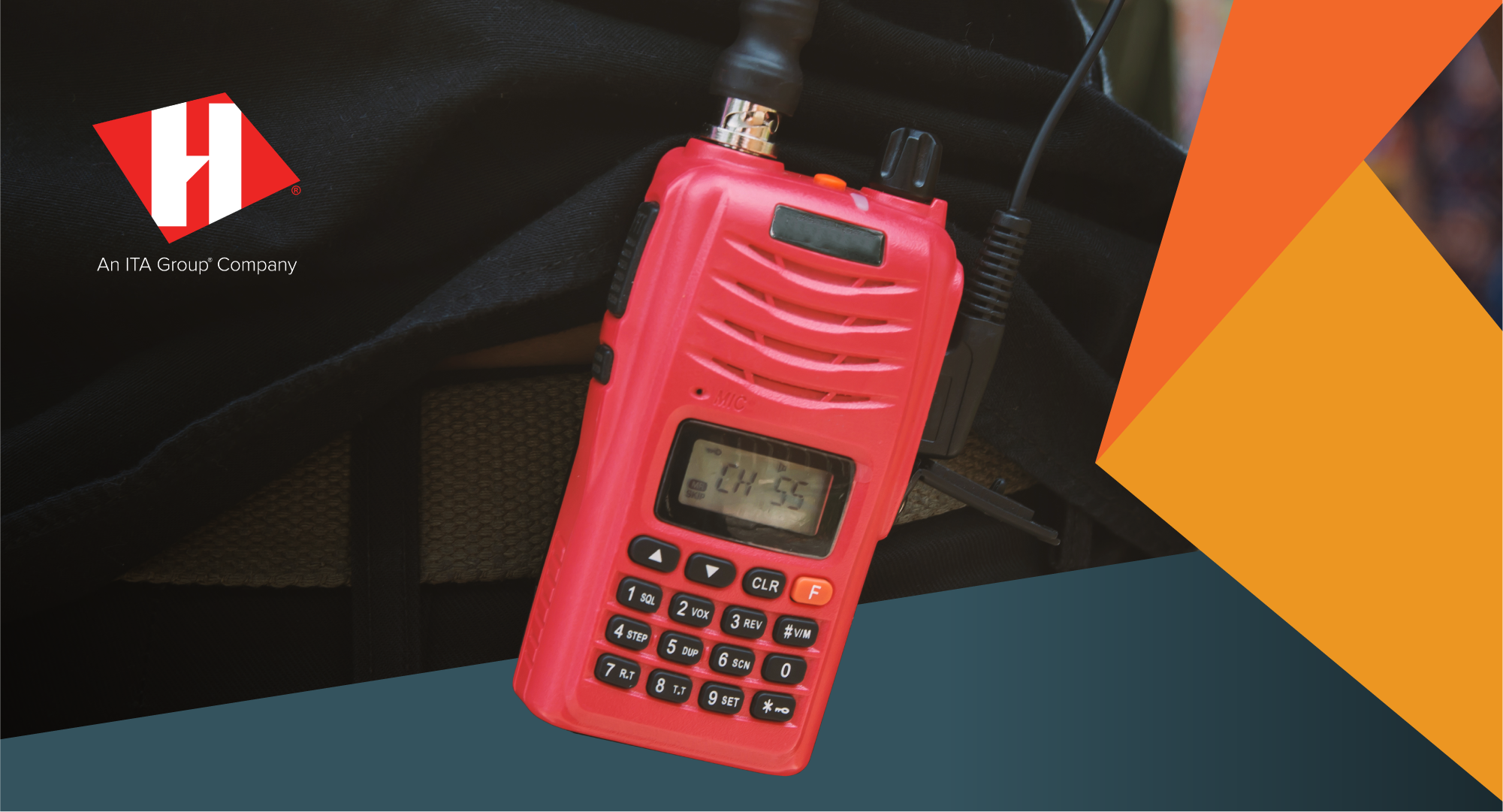What’s Next When Your Events Go Hybrid
Monday February 14, 2022
11 Min Read
In our first installment of this three-part blog series, we revealed how hybrid event strategies are here to stay. Now we take a look at ensuring you get the most out of them. The key components are rich with possibility, from creating the attendee experience, to activations, engagements, virtual platforms and distribution channels. The hybrid event has blossomed out of a real need, and continues to evolve.
The key to leveraging a hybrid event strategy to its fullest is twofold. First, understand the powerful potential to be found in new experience components. Then, build your event in ways to overcome the challenges of a hybrid event production. We asked several Hartmann Studios experts to share what’s top of mind for them right now as they give us an insider’s view of the virtual components of live event production.
A new lens on technical production
Technical production is—and has always been—about creating a venue and framework for engaging attendee experiences. Not so long ago, event venues were entirely physical, but now, flawless execution of your virtual venue is table stakes for any virtual or hybrid event. However, according to Hartmann Studios’ Senior Vice President of Technical Production, Karim Kassab, the space where event experiences happen now has transformed.
“There was a time when it was enough to just focus on the people in the room, then we began recording events for on-demand. But not until hybrid events did we really begin to rethink the event space. Now it can be infinitely large. That’s an enormous and fundamental shift,” Kassab says. “We have always focused on bringing big creative ideas to life, but traditionally our efforts were confined by the physical parameters of a venue. Today, by contrast, we are building the venue. There are no longer physical restrictions on our creativity.”

Kassab is quick to add, however, that this freedom from physical limitations introduces a fresh level of complexity that must be addressed, “There is a tremendous responsibility now for every aspect of event success that we have needed to master. Now we must consider things like how to keep everything loading smoothly when everyone attending virtually logs in at once alongside the live, in-person attendee experience.”
“The most expensive event is the one that doesn’t work.”
Not only that, almost every audience member who is not attending in-person has a different set of tools we must consider—from mobile to tablets and laptops—and no matter what they are using, the one thing all online attendees have in common is no tolerance for choppy, low-resolution broadcasts. The most expensive event is the one that doesn’t work and your audience remains out of reach.
“No one should have to figure this all out on their own.”
Kassab adds: “We are tasked with leveraging the most powerful aspects of each platform, from polling, to networking, data and customization. We are advocates for our clients’ needs and an expanded set of expectations. We help clients navigate a very noisy landscape for their best outcomes, expanded reach—and an entirely different set of lead times and price points. No one should have to figure this all out on their own. The stakes are too high.”
Found in translation: The opportunities in audience expansion
“I never get away from my computer!” Jayne Samuels, senior director of event production at Hartmann Studios laughs, given the omnipresence of computer technology during virtual and hybrid events. Jayne is passionate about the power of hybrid events reaching tremendously expanded audiences. She tells us that delivering engagement to an almost limitlessly diverse audience has a real science behind it. When asked if this can serve the needs of multilingual and disabled audiences, she is quick to answer.
“We are always prepared to use all the technology at our disposal, including closed captioning, sign language translators and simultaneous audio translations in any language,” and she shares, “And we all know not all automated captioning is great, which is why we like to use humans instead of AI solutions.”

“Suddenly, [events] are accessible to everyone and there are far fewer economic barriers.”
Discussing the importance of something as hands-on as coordinating translations and closed captioning, Jayne explains, “Now, instead of 10 regionalized and local events, organizations are combining them into a single, global mega-event. Suddenly, they are accessible to everyone and there are far fewer economic barriers. It is important to make critical content 100% accessible.”
“Of course, translations are only the tip of the iceberg,” says Samuels. “There’s no such thing as one-platform-fits-all. In fact, some platforms are banned in parts of the world. And we absolutely must connect and run tests on browsers and cell phones in areas where audiences will be joining. After all, what good is it to invite people to attend if they can’t connect! As our reach expands, we have new considerations to establish the all-important connections.”
Meeting the demand for greater event choices
Jeff Vara, Hartmann Studios executive creative director loves a good challenge, and it shows as he explains how events are being re-defined: “We are thinking as deeply as ever on essentially everything, because, everything has evolved; from venue requirements and video technology, to messaging development and the physical location of our audience.

And, no matter where they are—in-person or in their living room—audience expectations are higher than ever. Attendees want to hear targeted messaging delivered in very personal ways. They are eager for surprises, and amazement via all-new formats which increasingly include two-way engagements. Our job is to give them all those things, in a more expansive container.”
“…no matter where they are—in-person or in their living room—audience expectations are higher than ever.”
Jeff adds: “When events were mainly in-person, we could create a lot of environmental connectivity. Now, the relationship between presenter and audience needs to work both in-person and on a computer screen. Either way, it must drive the message forward.”
This requires a highly customized approach, so all members of the audience experience the connectivity. Historically, many organizations have shied away from direct interaction between audiences and presenters. However, more and more are embracing the energy that this transparency creates. In fact, it is now one of the best ways to connect with their in-person and remote attendees at once.
“Prioritizing audience engagement is just one example of how the bar has been raised by the virtual aspect in hybrid events.”
A new way to frame authentic stories
Storyteller extraordinaire, James Braly, understands the story arc of corporate events, especially in a hybrid landscape, “Communication is about landing with an audience. And in hybrid events you are landing with one person at a time. It might be 3,000 ‘one persons,’ or 10,000 ‘one persons’–but it is ultimately one person. That significantly changes what you say and how you say it.”
James goes on, “As with anything that you magnify, the strengths and weaknesses are clearer. Hybrid events magnify what is said and how it is said—especially with the virtual audience. When you stand on a stage in front of 3,000 people, there is a built-in theatrical component to it. There is some required artifice that is permissible and you still look normal cracking jokes and making broad gestures. But when you try that same approach to a camera where you are talking to one person, that seems forced and you’ll lose your audience. It is important to not only be aware of both approaches, but have techniques in place to take advantage of both formats.”
“…include the audience in the story itself.”
One of the most powerful ways our Hartmann Studios team has done this successfully in recent months is by including the audience in the story itself. And today’s ubiquitous technology makes this easier than ever before. Nearly everyone these days is equipped with a high-resolution camera and so we can easily include the audience’s own stories, captured with their own unique flair, with low barriers to execution. We can make direct connections that literally humanize the event message by including the people that matter most.

“The form of events has changed, but the reasons for having them have not…If they don’t care, none of it matters.”
Braly expands further about the unique requirements of hybrid events: “It is just more intimate from a content and a performance standpoint. The form of events has changed, but the reasons for having them have not. The primary purpose of a meeting is not informational. We can send data through email or text. A bunch of facts does not require a meeting,” he returns to the importance of story, “Finding the story in the data that humanizes it helps audiences feel connected to and understand the data. It helps them care. If they don’t care, none of it matters. We are able to unleash presenters’ passion—a necessary part of successful hybrid events—in a way we couldn’t necessarily with in-person event media.”
Creating ROI from the midst of complexity
Melanie Pittman, senior director of accounts at Hartmann Studios, knows well how the advancing complexity in events means clients need trusted partners and expert guidance more than ever.
“When we take on any new challenge, we take our research very seriously,” she explains, “and as hybrid events ramp up, research has made it clear that engagement—pre-, post- and during the event—remains the absolute most important consideration. Our clients require engagement with leaders and with peers, keeping it at the forefront of everything.”
“…as hybrid ramps up, research has made it clear that engagement—pre-, post- and during an event—remains the absolute most important consideration.”
“However, it’s not always immediately clear what is needed in order to do that when it comes to hybrid events. We all agree these events cannot be one-sided or a glorified WebEx or Zoom meeting. Our approach has to feel fresh and new in order to amplify the impact of a hybrid event.”

Melanie shares some of what worked well, “We planned a complete audience experience, starting with swag boxes filled with items audiences could anticipate using during the event and followed them up with fun touch points throughout the full event experience. So the event is continuous, rather than a moment in time, and includes follow up engagements as well.”
“Another great way to build energy for the event is to elicit user-generated videos of the audience asking questions. This lets the attendees see themselves, know they are being heard, and help to direct the content.”
“There is always fear when it comes to dealing with the unknown.”
Melanie admits, there is always fear when it comes to dealing with the unknown, “but the great news is there is a solution for every possible challenge. That’s why we never stop iterating. There are new platforms with new tools being developed daily. What I have seen happen over and over again is that when we show clients our data, there is more comfort with trying these powerful new ways to engage. Soon, the excitement grows around what a hybrid event can do and what seemed like an obstacle at first turns into an even greater opportunity for engagement and ROI than what we had with purely in-person events.”
Sharper focus and broader reach
The potential for success in your hybrid event strategy is almost unlimited. At the same time, to tap that potential takes a clear understanding of this new breed of event. Amid the complexity, the trends that are driving where hybrid events are headed include:
- Audience appetite for authenticity, story and engagement
- Nearly unlimited audience size and venue scope, requiring an expert and inclusive approach
- Event strategy, research, content development, scheduling, testing and pre-planning that is more critical than ever before
We invite you to join us for our third and final installment in this hybrid event blog series as we dive into some of the most effective hybrid event approaches we have helped create, and what it took to get there.
Ready to get started on your next event? Contact Us today.
Read more stories
View AllAll Posts
Event Design for All 5 Senses
What you need to know When people ask about the lasting impression of an event, the question is often framed around flavor: What kind of taste did the experience leave? Content and messaging matter. But for creative event marketers who want to create a positive memory, incorporating multisensory elements is a must. Caring for the...
5 Min Read
All Posts
How Event Strategy Enhances Incentive Travel Experiences
What you need to know When top performers achieve career heights, they’re looking for more than spectacular views. Earning a corporate incentive trip signals entry into an elite circle. Especially when organizations merge luxury settings with high-impact events that participants could never coordinate on their own. Appealing to competitive personalities requires activations that go beyond...
4 Min Read
All Posts
How to Develop a Security Plan for Corporate Events
What you need to know Before attendees fully engage in an event experience, they must feel safe. That’s why security planning is foundational for successful live events, at any scale. From hosting a group of executives for an intimate dinner to a city-wide celebration in the streets: behind every seamless experience is a well-designed safety...
5 Min Read



